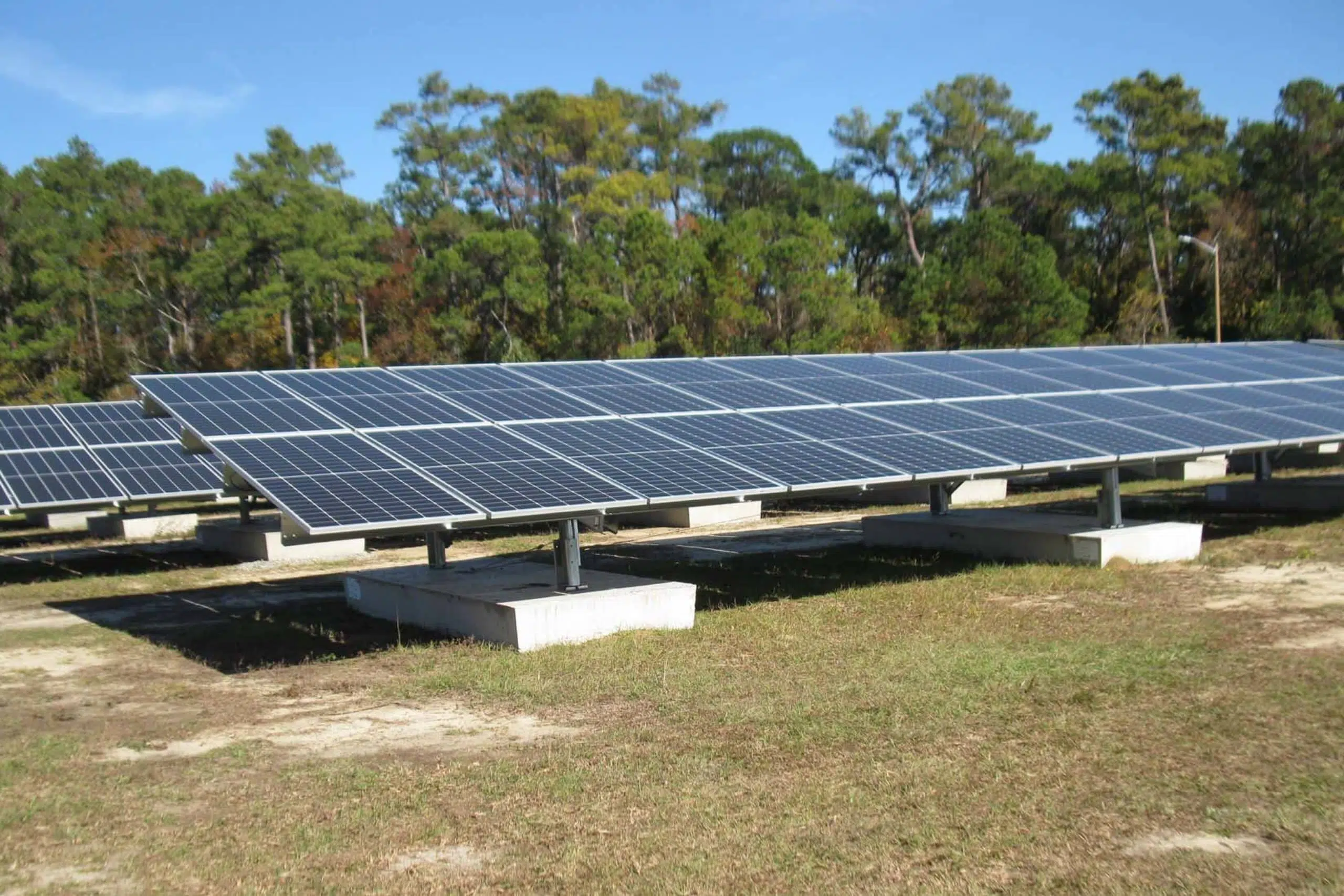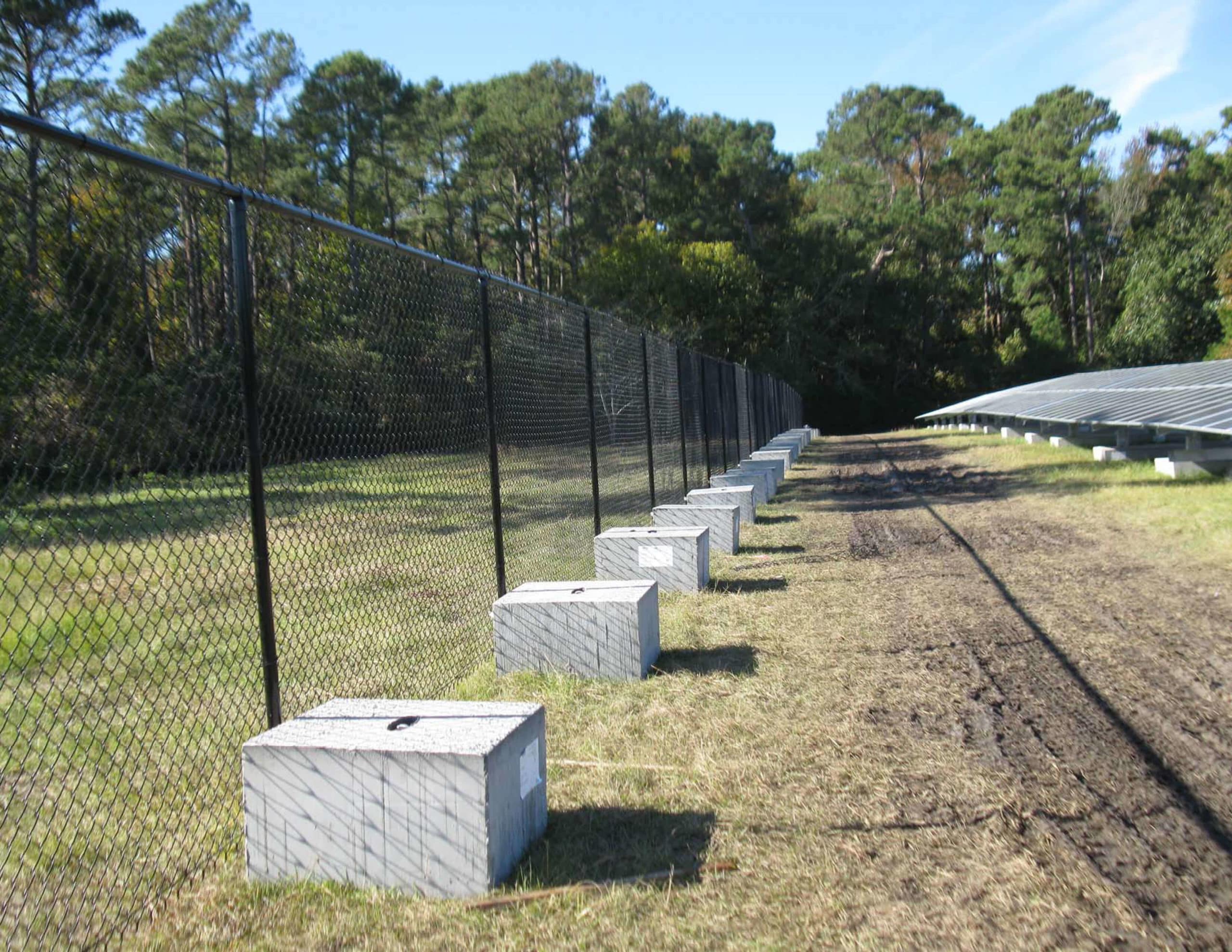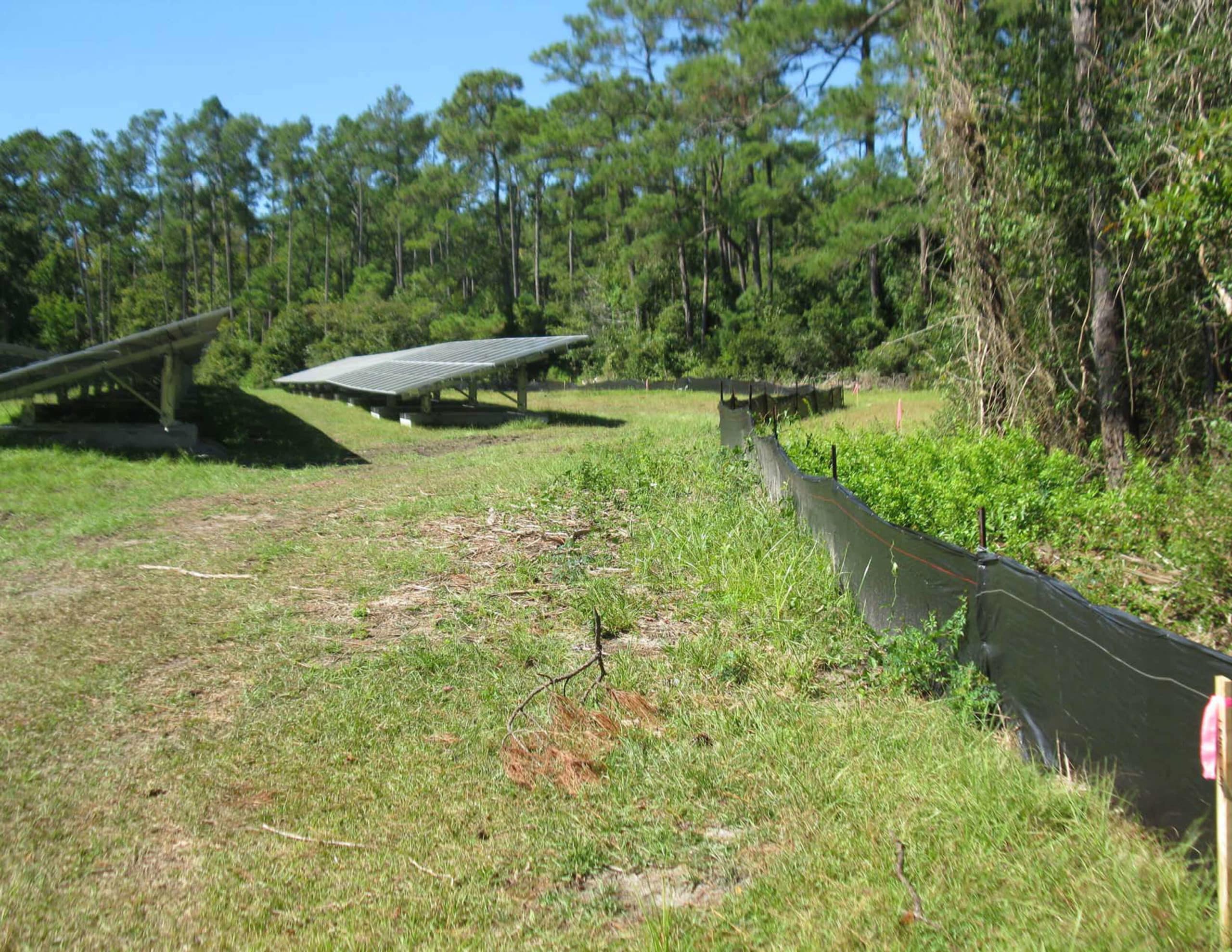- January 26, 2021
- Perspectives, Trending Topics
Using Landfills for Solar Projects, Developers Turn Trash into Treasure


John Barefoot, PE
Civil Engineering Consultant

Jason Cooper, PE
Civil Engineering Consultant
Whether you’re driving through rural agricultural fields or navigating the hustle and bustle of urban cities, utility scale and community solar projects continue to make an appearance as they rapidly expand across the country to serve our growing energy needs. What’s one place you might not expect to see a field of solar arrays? Sitting atop your local landfill.
Yes, you heard that right. As developers seek land for solar arrays, some are turning to closed landfills as a home for their solar projects. After a landfill reaches capacity, it is typically covered with an impermeable cap of clay soil to keep debris and trash safely tucked away. While these landfills are no longer suitable for typical development due to the decomposing matter below the surface, developers can utilize solar to bring new life to landfills.
Best Practices for Solar Landfill Projects
Landfill solar requires the use of a ballasted system usually comprised of concrete blocks, which differs from typical solar arrays supported by steel piles. These concrete blocks support the solar arrays and can sit on the existing grade without disturbing the integrity of the clay soil cap. Other common solar facility features—like perimeter security fencing—can also be ballasted and positioned over the clay liner. By utilizing ballasted systems, we can take advantage of closed landfills with solar development and reuse brownfield land that is otherwise limited for future uses and additional value.
Kimley-Horn supports solar developers and contractors through environmental and hydrology studies; civil, structural, and electrical design; permitting; and construction administration for landfill solar projects across the nation. We’ve worked on solar landfill sites that range in power production from 2 megawatts to 20+ megawatts in Virginia, South Carolina, New Jersey, and Illinois.
So, how can you turn trash into treasure giving closed landfills their solar energy makeover? Here are some tips and best practices we’ve gleaned from our experience with solar landfill projects:
1. Increase communication with all applicable review agencies.
Local municipalities and state departments of environmental quality may be unfamiliar with landfill solar, so it’s important to clarify how the project will navigate their code requirements. This can also help avoid delays in schedule. Special consideration should be given to required stormwater analysis.
2. Use non-disturbance methods.
Depending on who owns the landfill, it may be difficult to find a contractor who is comfortable taking on the liability for disposal or clean up if something were to be uncovered. While a disturbance to the clay liner could be a concern for geotechnical studies and explorations that are required to gather design data, we’ve overcome this challenge by utilizing geotechnical consultants who use non-disturbance methods, like Frequency Domain Electromagnetics (FDEM). This method can identify the lateral extent of the buried material and measures conductivity of the underground strata and buried organic material. For structural design, due to the lack of geotechnical data available, our in-house structural teams sometimes use the minimum presumptive values allowed per code to design the inverter/transformer foundations.
3. Design perimeter fencing.
Kimley-Horn’s structural engineers design perimeter fencing that is ballasted via concrete blocks which can be used over the landfill soil cap. These designs are site-specific and provide a counterweight to overturning/sliding like the ballasted infrastructure that supports the arrays on these projects. Because these components are numerous in nature, value engineering them to minimize concrete volume and hardware can go a long way to reduce construction costs.


4. Utilize creative erosion control practices.
Typical temporary silt fence, diversion ditches, and erosion control basins all require ground disturbance and penetration of the clay soil cap. These measures can be used without issue where there is room outside the clay liner. However, when the clay liner is in conflict with these measures, Kimley-Horn uses creative erosion control practices that require no ground penetration within the limits of the soil cap. We also work with the jurisdiction to approve alternative erosion control measures that are needed in these special circumstances—like hay bale barriers or compost socks weighted with sandbags. Having an open dialog with reviewers on the nuances of landfill sites and erosion control is key in creating the right erosion control plan.
5. Get creative.
The clay liner cannot be disturbed, so options to complete earthwork cut and grading are limited. Being creative with the placement of inverter/transformer pads, site access roads, and other features prevents impounding runoff or other adverse effects.
6. Consider using landscaping buffers.
Some people love the way solar arrays look; some do not. In areas where sites are visible to the public, landscaping buffers can help mitigate the viewshed effects on neighbors who do not like the look of solar infrastructure. Due to the limited ability to excavate and place new trees or shrubs, consider creating a landscape berm on the existing grade with enough height that the plant material can be placed without impacts to the clay liner.
7. Remember the surrounding environment.
On typical utility scale and community solar projects, electrical cables are often buried underground. For landfill solar, cable trays and harnesses are often used to keep the electrical cables above ground and prevent ground disturbance. When planning the site layout, keep these cable trays in mind as they will need to extend from the arrays to the inverter/transformers, and then to the point of interconnect at existing transmission lines. Lay out access roads and other features to allow maneuverability of the site and avoid conflict with the electrical lines. Encasing the electrical lines in above-ground concrete is a good alternative when access road crossings cannot be avoided. This allows them to be crossable, but does not impact the soil cap.
Keeping these best practices in mind during the concept, design, and permitting process will help make sure your next landfill solar site is a success. Solar energy facilities continue to multiply in the United States, and closed landfill sites provide a wonderful reuse opportunity that can really turn trash into treasure.
About the Authors

John Barefoot, PE
John is a professional engineer with more than 10 years of experience in planning, design, and construction of civil engineering projects. His background is in utility-scale energy projects, as well as retail, warehouse storage, industrial, and commercial land development. John’s project experience includes preliminary site planning, site feasibility, entitlement support, grading and drainage design, and construction support services for a multitude of national private energy clients, including solar developers, EPCs, and regulated utilities. His design and solar experience spans across the southeastern United States and he serves as a Regional Lead for the Southeast Solar Team out of Raleigh, North Carolina.

Jason Cooper, PE
Jason has more than 12 years of civil engineering experience specializing in site development, detailed drainage design, utility design, erosion control design, water quality design, and permitting for renewable energy and commercial developments. His primary focus in recent years has been on renewable energy projects in the Midwest, but he has also managed various solar projects across the United States. He has worked on over 100 solar projects ranging in size from 1 MW to 500 MW. Through entitlement, design, and permitting processes, Jason has developed quality working relationships with a large variety of permitting agency staff in the Midwest and throughout the Country and prides himself on proactive, efficient communication. He serves as the Regional Lead for the Midwest Solar Team where he has gained extensive experience in Client Management, Quality Control/Assurance, and Program Development.
